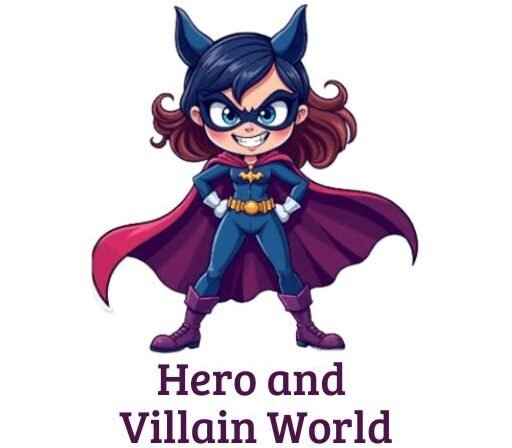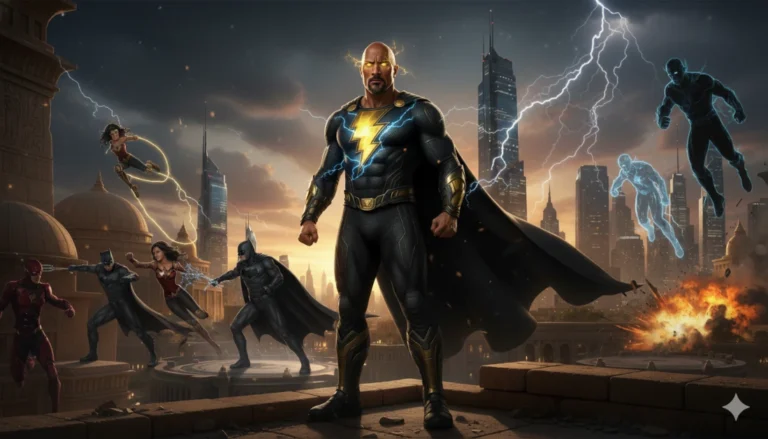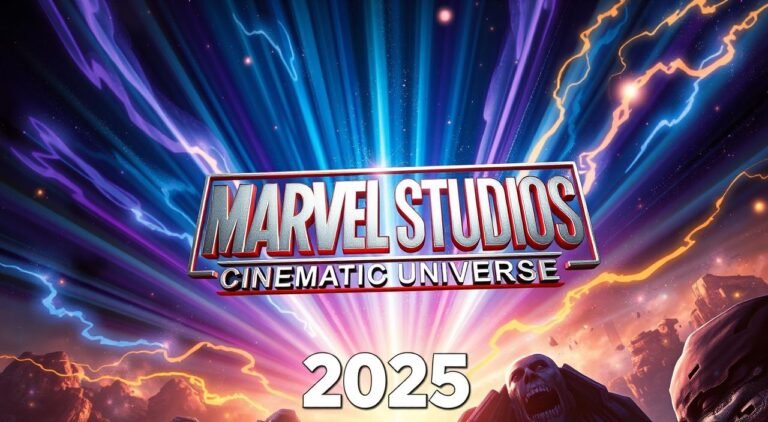Can You Trust the Story? When Comics Use Unreliable Narrators
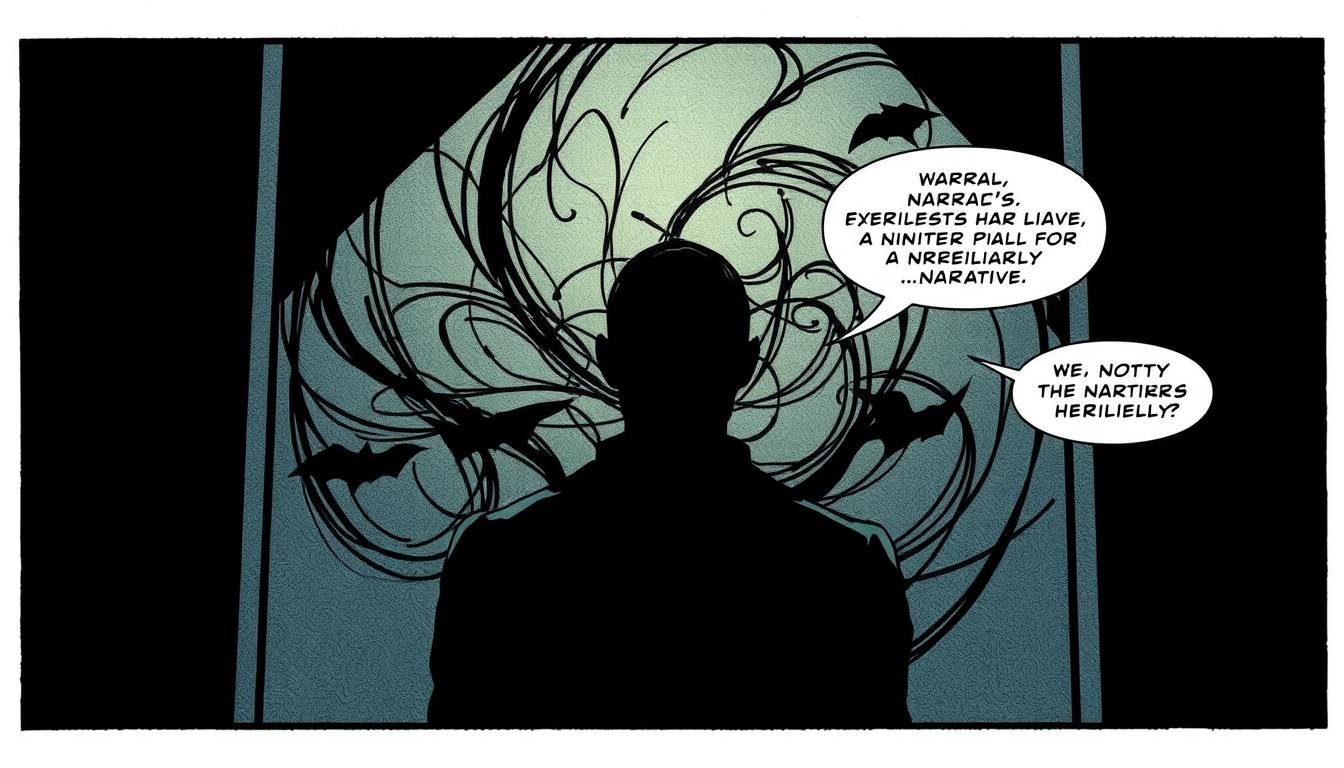
What if the story you’re reading isn’t exactly what it seems? In the world of unreliable narrators comic storytelling, the line between truth and fiction becomes delightfully blurred. Comics have changed how we see stories, making us question each panel.
Unreliable narration is more than a technique—it’s an art form. It makes you a detective of the story. Imagine a comic where the main character’s story keeps changing. This is the magic of unreliable narrators in comic storytelling.
Comic books are a powerful way to explore complex stories. They use a unique visual language. This allows creators to play with what we see and think, making stories more layered than usual.
As you explore this, you’ll see how unreliable narration turns comics into complex worlds. Each panel can lead to many interpretations. It invites you to think deeply about stories.
Get ready to learn about how stories are shaped and the world of unreliable narrators in comics. Your journey into this fascinating world starts now.
Understanding the Role of Unreliable Narration in Comics
Comic storytelling has changed a lot with new narrative techniques. Unreliable narration is a key tool that changes how we read comics. It makes us think differently about stories.
Unreliable narration is a complex and interesting way to tell stories. It makes us doubt what the storyteller says. This creates a more exciting reading experience.
Defining Narrative Unreliability
Narrative unreliability happens when the storyteller’s truth is in doubt. In comics, this shows in a few ways:
- Intentional misrepresentation of events
- Distorted personal perspectives
- Psychological limitations of the narrator
- Strategic information withholding
The Impact on Reader Engagement
When you meet an unreliable narrator, your reading changes. Literary devices like visual tricks and broken stories make you work harder. You have to figure out what’s really happening.
| Narrative Technique | Reader Interaction Level | Storytelling Impact |
|---|---|---|
| Visual Perspective Shifts | High | Challenges Perception |
| Fragmented Memories | Medium-High | Creates Mystery |
| Conflicting Dialogue | High | Generates Tension |
Historical Context in Comic Literature
Comic creators have used unreliable narration for a long time. From graphic novels to superhero stories, it lets them dive into complex characters. This gives readers a deeper look into what drives characters and the story itself.
Unreliable Narrators Comic Storytelling: Essential Elements
Comic storytelling is all about complex narrators. These storytellers make us question what’s real by changing how we see things. Knowing about different types of unreliable narrators helps us get more out of comics.
There are many kinds of flawed narrators in comics:
- Intentional Liars: Characters who lie on purpose
- Naive Observers: People who don’t get what’s happening
- Mental Distortion Narrators: Characters with mental health issues
- Comedic Unreliable Narrators: Storytellers who hide the truth with jokes
Each type of narrator adds something special to the story. The way the story changes helps us find out what’s really going on. Things like color changes and different art styles tell us if we can trust the narrator.
“In comics, an unreliable narrator is not a weakness, but a powerful storytelling tool that engages readers beyond traditional narrative structures.” – Comic Narrative Expert
Learning to spot these storytelling tricks makes comics even more exciting. By understanding how narrators play with our view, we can dive deeper into our favorite comics.
The Psychology Behind Unreliable Comic Narrators
Exploring comic storytelling reveals a world where character depth is key. Unreliable narrators create a unique space that tests readers’ views and builds suspense. They use complex psychological tricks.
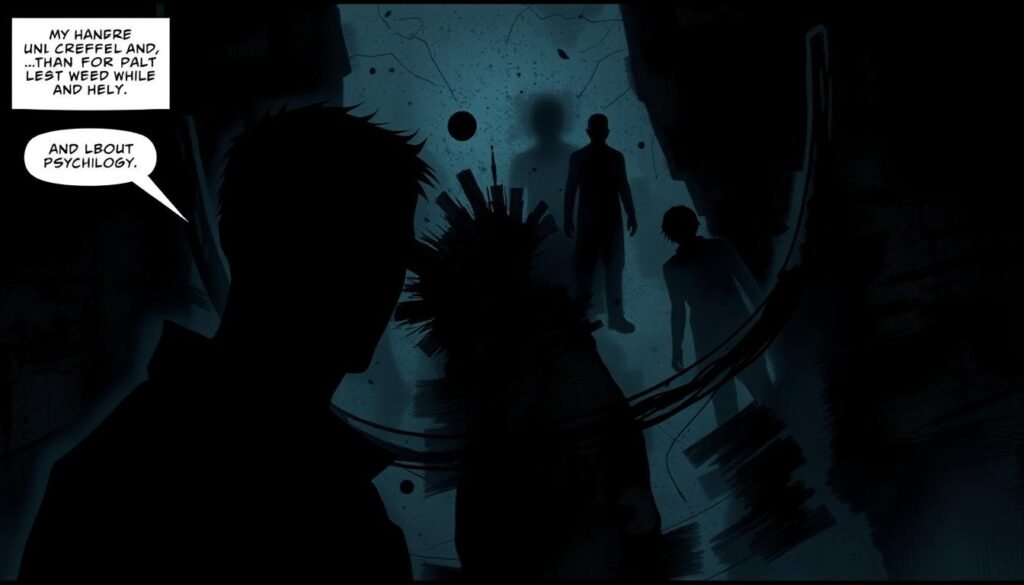
Comic creators skillfully play with our minds to keep us guessing. They blur the lines between what we see and what’s real. This makes their stories more than just tales.
Character Perception vs Reality
It’s important to know the difference between what characters think and what really happens. Unreliable narrators often have special traits that mess with their stories:
- Traumatic experiences that change how they see things
- Strong personal beliefs
- Hidden biases
- Defenses to protect their feelings
Cognitive Dissonance in Storytelling
Cognitive dissonance is a powerful tool in comics. It makes characters’ beliefs clash, drawing readers into the story. This emotional pull keeps us hooked.
Mental States and Narrative Voice
Different mental states change how characters tell their stories. A narrator’s mind can turn the whole story into a complex puzzle. It keeps readers on their toes.
The most compelling unreliable narrators are those who genuinely believe their own distorted perspectives.
Understanding these psychological tricks shows how comic creators make stories that engage both our minds and hearts.
Visual Techniques for Depicting Unreliable Narration
Comic artists use advanced techniques to engage readers through visuals. Unreliable narration is a key tool for creating mystery and intrigue. It makes readers question what’s real and what’s not.
Exploring visual unreliability starts with knowing some key strategies:
- Distorted panel perspectives that challenge perception
- Color palette shifts representing emotional unreliability
- Intentional visual inconsistencies
- Symbolic imagery that contradicts textual narration
Artists use visual elements to create doubt. Fragmented panel layouts show a narrator’s broken mind. Inconsistent character looks reveal deeper psychological issues.
Color is vital in showing unreliable narration. Small color changes can show shifts between real and imagined scenes. Warm colors might mean nostalgia, while cool colors suggest distance or doubt.
Learning about these techniques changes how you see comic stories. By spotting visual clues, you discover deeper meanings that push the limits of storytelling.
Case Study: Spider-Man’s Doctor Octopus Deception
Unreliable narrators in comics hit new heights with a shocking twist in Spider-Man’s history. The story of Doctor Octopus and Peter Parker is a lesson in suspense and tricking readers.
In Amazing Spider-Man #698, readers saw a huge plot twist. It changed how we see stories:
- Doctor Octopus switches minds with Peter Parker
- The story tricks us into thinking one thing
- We don’t know who’s really telling the story
Narrative Structure Analysis
The comic’s story is a complex web of thoughts. Creators used clues in pictures and words to keep us guessing.
Visual Clues and Misdirection
Artists used small hints to show something was off. Changes in how characters look and tiny facial expressions made us feel something was wrong.
Reader Response and Resolution
The twist sparked huge talks and praise. Fans were amazed and impressed by the clever storytelling. It showed how unreliable narration can make comics exciting and full of surprises.
The Role of Panel Layout in Unreliable Narration
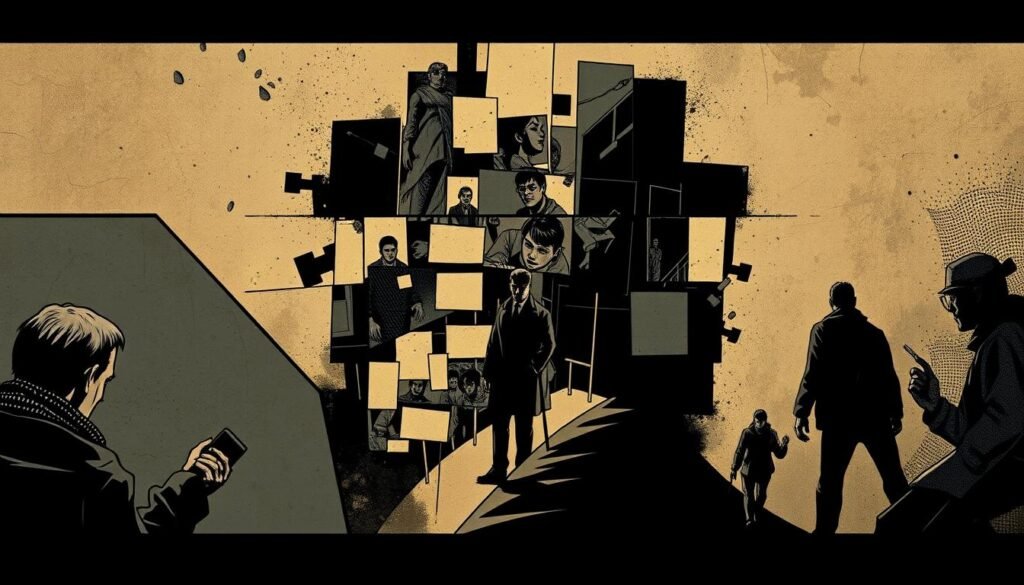
Panel layout is a key tool for comic artists to engage readers. It’s used to create stories with unreliable narrators. Creators design panels to make readers question what’s real and what’s not.
Comic panels can make stories uncertain in several ways:
- Non-linear panel arrangements that disrupt chronological understanding
- Overlapping panels that blur temporal and spatial boundaries
- Unconventional gutter spaces that interrupt narrative flow
Panel size and shape are important for how readers see the story. Innovative panel grid designs can change how time feels, adding tension that matches an unreliable narrator’s mind.
| Panel Technique | Narrative Impact |
|---|---|
| Fragmented Panels | Suggests mental disruption |
| Asymmetrical Layouts | Indicates emotional instability |
| Overlapping Imagery | Blurs reality and perception |
Artists use panel transitions to control what readers see. This guides readers through a complex story that breaks the usual rules of storytelling.
Temporal Shifts and Memory Manipulation
Comic creators have become experts in storytelling. They use new ways to show memories. This makes stories more exciting and challenges old ways of telling tales.
Unreliable narrators play with time to change how we see things. They make memories seem like they can change. This lets storytellers create complex worlds.
Flashback Techniques in Comic Storytelling
Flashbacks are great for showing broken memories and secrets. Comic artists use them to:
- Break the usual story flow
- Add depth to characters’ minds
- Make stories more emotional by not following a straight line
Unreliable Memory Representation
Artists show how memories can be twisted or made up. They use visual metaphors and different styles. This shows how memories can be wrong or mixed up.
Timeline Distortion Methods
Creators use clever tricks to make readers question what’s real. They use:
- Panel designs that show different times at once
- Color changes to show when memories switch
- Visual clues that suggest the story isn’t always true
This way, comic storytellers take us into a world where what’s real is up to us. It breaks the old rules of telling stories.
Character Perspective and Point of View Shifts
Unreliable narrators in comics make stories exciting by using clever perspective shifts. These techniques change how we see characters and the story’s flow. By changing viewpoints, artists can break new ground in storytelling, pushing the limits of what we expect.
Character perspective shifts open up new ways to tell stories:
- Reveal hidden reasons behind characters’ actions
- Create mystery in the story
- Make readers more engaged with unexpected insights
- Show complex mental worlds
Comic creators use point of view changes to break free from old storytelling rules. Internal monologues and thought bubbles are key for showing unreliable narration. They let us see into characters’ minds, revealing depths that might be missed in regular stories.
Visual storytelling makes perspective shifts stand out with creative panel designs. Artists use visual clues, colors, and layout to show when the story’s truth changes. This makes readers more than just viewers; they become detectives, figuring out the story’s secrets.
Perspective shifts are not just narrative techniques—they’re windows into characters’ most intimate psychological landscapes.
Knowing about these storytelling tricks helps you enjoy comic stories more. Every shift in perspective is a chance to learn more about characters and question what we think we know about stories.
Symbolism and Visual Metaphors in Unreliable Narration
Comic artists use powerful tools to make stories come alive in pictures. They play with unreliable narration, adding layers of meaning. This makes readers think and question what’s real.
It’s not just pictures in comics. Creators use special techniques to share deep truths. They use symbols to tell us more than words can.
Color Psychology in Narrative Manipulation
Color is a key tool in comics. Artists pick colors carefully to:
- Show emotions
- Hint at mental health
- Point out when stories are not what they seem
Symbolic Elements and Hidden Meanings
Symbolic elements add layers to stories. They make readers think and guess. These visual clues lead us into a world of mystery.
| Symbolic Element | Narrative Function | Reader Engagement Impact |
|---|---|---|
| Recurring Motifs | Hint at Character’s Mental State | Increases Interpretative Complexity |
| Color Shifts | Indicate Narrative Perspective Changes | Encourages Active Interpretation |
| Fragmented Imagery | Represent Psychological Fragmentation | Deepens Narrative Mystery |
Visual Motifs as Narrative Signals
Comic artists use repeating images to hint at story tricks. These motifs act as visual whispers, guiding us through the story. They keep us guessing and curious.
Text and Image Interplay in Unreliable Narration
Comic storytelling is special because it mixes text and images in a unique way. This blend makes the story more complex and keeps readers on their toes.
When you see how comics play with truth and lies, you start to see them differently. They show how what characters say can be different from what the images show.
- Textual captions can deliberately misrepresent visual scenes
- Thought bubbles might contradict character actions
- Visual metaphors can undermine written dialogue
Comics make you an active part of the story. They give you clues in every panel and word, asking you to think deeply.
Visual storytelling lets creators:
- Introduce subtle narrative contradictions
- Manipulate reader perceptions
- Create complex storytelling experiences
The magic of unreliable narration lies in its ability to transform readers from passive consumers to investigative storytellers.
Comics don’t just tell stories—they challenge you to unravel them.
Modern Applications in Digital Comics
Digital platforms have changed how we see unreliable narrators in comics. Now, your reading experience is more interactive. It mixes reality and fiction in new ways.
Metafiction gets a fresh spin with digital comic tech. Creators use new tools to change how stories are told:
- Interactive panel sequences that change based on reader choices
- Hidden narrative layers revealed through digital interactions
- Dynamic timelines that shift perspective instantly
- Embedded multimedia elements challenging narrative reliability
New digital platforms let creators play with storytelling rules. You can follow different story paths. This was not possible in print comics.
Innovative creators are exploring new ways to tell stories:
- Augmented reality narrative experiences
- User-triggered narrative branches
- Algorithmic story generation
- Real-time perspective shifts
These tech advancements make comic stories more engaging and thought-provoking. You get to dive deeper into the narrative.
Conclusion
Unreliable narrators in comics change how we see graphic stories. Reading comics becomes a fun challenge. It makes us think more about the story’s true meaning.
Comic creators use special techniques to make stories complex. They use each panel and character’s view to create mystery. People like Brian K. Vaughan and Neil Gaiman show how these tricks make comics more than just fun.
Now, you can see comics in a new light. You can spot when stories are being told in tricky ways. This skill lets you enjoy comics even more, knowing there’s more to them than meets the eye.
Comic reading is now more than just looking at pictures. It’s about understanding the story’s secrets. So, get ready to explore more of the exciting world of comics.
FAQ
Q: What is an unreliable narrator in comic storytelling?
A: An unreliable narrator is a storytelling trick where the narrator’s truth is doubted. This makes readers question what’s real in the story. In comics, visual and text clues show when the narrator’s words don’t match the story.
Q: How do comic artists create unreliable narration?
A: Artists use many ways to make narrators unreliable. They play with visuals, layout, colors, symbols, and text-image matches. These tricks make readers think and get involved in the story.
Q: What types of unreliable narrators exist in comics?
A: Comics have many kinds of unreliable narrators. There are liars, simple observers, characters with mental health issues, and those with memory problems. Each adds depth and complexity to the story.
Q: Why do comic creators use unreliable narrators?
A: Creators use them for suspense, depth, and intrigue. They make readers think more about the story. This turns readers into detectives, figuring out the truth.
Q: How has digital technology impacted unreliable narration in comics?
A: Digital tools have opened up new ways to tell stories. They include interactive timelines, hidden panels, and choices that change the story. These features let creators play with unreliability in new ways.
Q: Can visual elements reveal a narrator’s unreliability?
A: Yes! Artists use visual tricks like odd art, changing panel sizes, color shifts, and symbols. These hints, along with text, create a rich, layered story.
Q: What psychological principles underlie unreliable narration?
A: It uses psychology to play with how we see and remember things. Concepts like cognitive dissonance and memory tricks show how characters’ minds can warp reality.
Q: How do readers benefit from experiencing unreliable narration?
A: Readers get better at analyzing stories and think more deeply. It helps them understand stories better and improves their critical thinking and emotional smarts.
